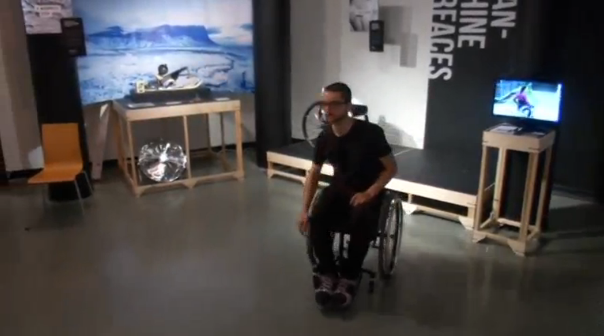
(Reuters) — A new wheelchair system that allows paraplegics to manoeuvre by using their upper body movement rather than through breaking and pushing has been designed by a student.
Swiss design graduate Reto Togni showed off his Reagiro wheelchair at the Royal College of Art (RCA) graduate exhibition in London in June.
Togni told Reuters: “Conventional wheelchairs work the same way as shopping carts, with casters that rotate in every direction. With this wheelchair one can lock these caster wheels in a straight position against the steering bar that is then activated by the backrest.”
The backrest pivots left and right according to which way the user wants to move, which makes the two small caster wheels travel in the same direction.
Togni explained that traditional wheelchairs have no steering system and that changing their direction requires users to brake on one side and put more energy on the other to alter the route. By using the upper body to turn maintains the energy and movement of the wheelchair, making steering “effortless”.
He said: “In terms of the mechanical system it’s a push-pull cable used in industrial machines. It works like a bike brake cable, except that it’s not only pulling but also pushing. The rotation of the backrest is translated into rotation of the front wheels.”
Users make the wheelchair change direction by leaning in the direction they wish to travel.
“Leaning into curves is an intrinsic safety move, because you move away from where you might fall. I reckon this product is at least as safe as traditional wheelchairs, if not safer because you might prevent falling,” said Togni, adding that the design also frees up the user’s hands much more than traditionally controlled wheelchairs.
He also believes the movements of the user’s torso to control the wheelchair could have a therapeutic effect by strengthening their core muscles, though clinical trials would be needed to prove this.
In addition, freeing up one of the user’s hands would allow them to hold a drink or even use their cellphone to send a text or make a phone call while on the move.
Togni has filed a patent for his design and is looking for investment partners to turn his prototype wheel into a consumer model.
The RCA exhibition shows off the work of more than 700 art and design postgraduate students, many attempting to offer design solutions to problems that have yet to be solved by professionals








